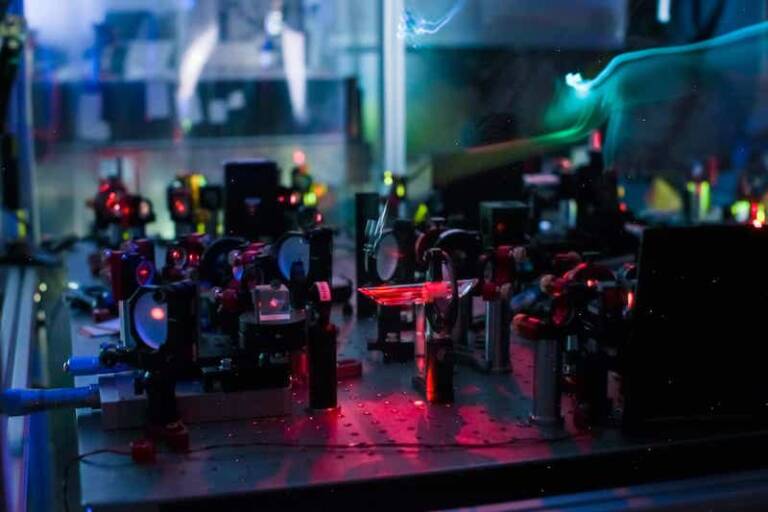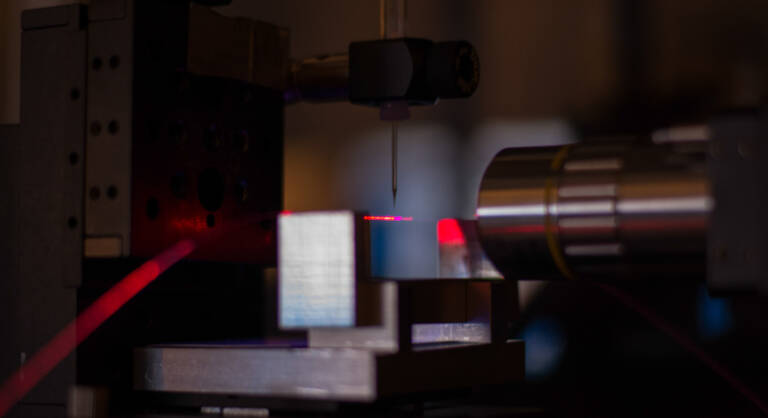Research
The team currently focuses on two main research directions: Nanophotonics, and Quantum Fluids of Light.
Nanophotonics:
Quantum electrodynamics (QED) explores the interaction between single emitters (such as atoms, ions, or quantum dots) and electromagnetic fields. This interaction can significantly alter the fundamental properties of these emitters. Applications of QED range from secure communication to biological imaging, and it also facilitates tests of quantum theory through efficient light-matter interactions.
Nanophotonics, originally intended for the essential miniaturization of optical devices, provides new tools to play with these interactions. The team is focused on coupling optical fibers and waveguides with various quantum emitters, aiming to develop innovative hybrid systems and study waveguide-QED features.
Quantum Fluids of Light
Quantum fluids physics studies hydrodynamic systems that exhibit quantum behavior, such as liquid helium, ultra-cold gases, and quark-gluon plasma. These diverse systems share similar properties when quantum effects dominate, influenced by Bose or Fermi statistics, leading to phenomena like Bose-Einstein condensation and Fermi pressure. The field explores fascinating effects like superconductivity and superfluidity. Recent research has demonstrated that photons can behave as a quantum fluid, showing effects such as superfluidity and quantized vortices in confined geometries.
The team
We are a group of friendly and welcoming scientists and we aim to create an inclusive and supportive research environment.
We strongly believe in the value of diversity and inclusion in the field of quantum physics and we encourage women and/or individuals from underrepresented minority groups to apply.

Staff
In the group, we work on the grand challenges of quantum gases without the experimental complexity of ultra-cold atoms setups. We conduct projects at the interface of instrumental design and novel physics..

Jobs
We are currently looking for new PhD students, Postdocs, and Master students to join the team.
By joining the group, you will be involved in determining the important and interesting questions, creating and improving instrumental setups, performing measurements, simulating and analyzing the data, and making discoveries



